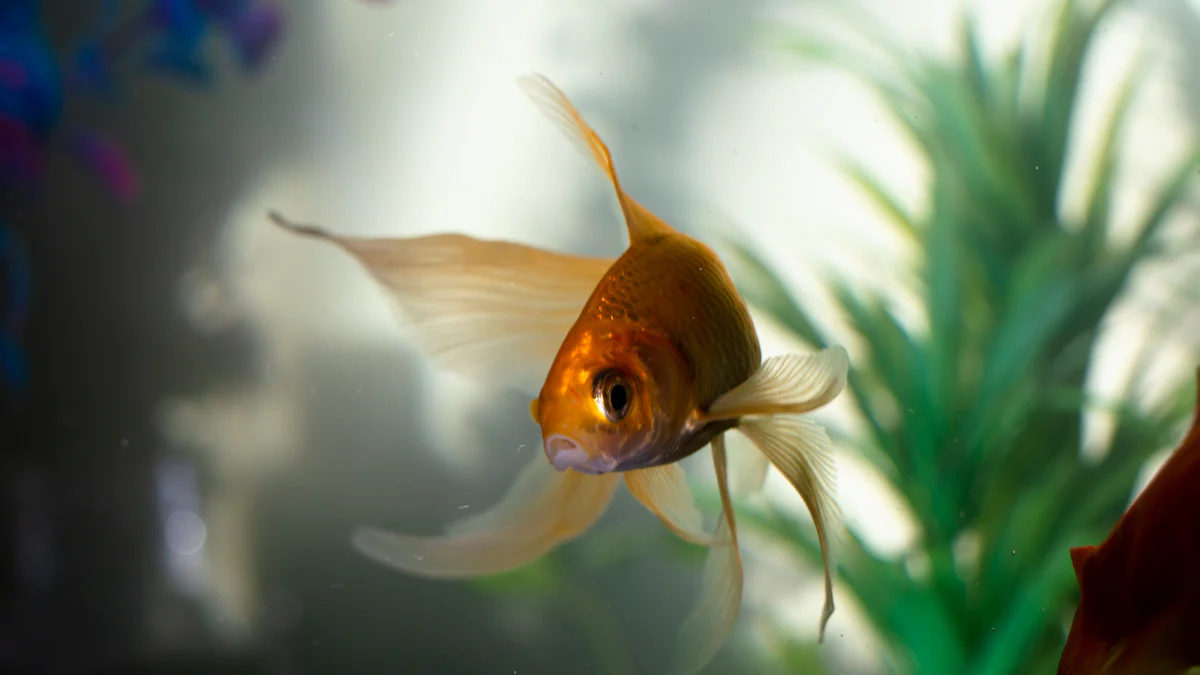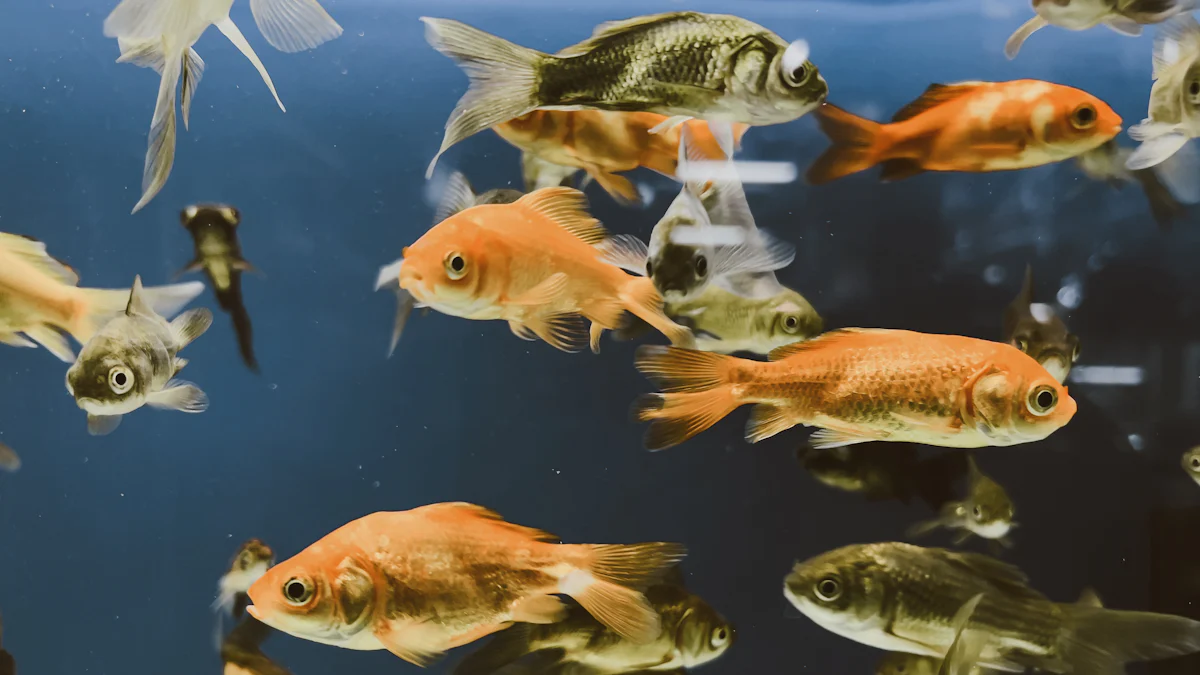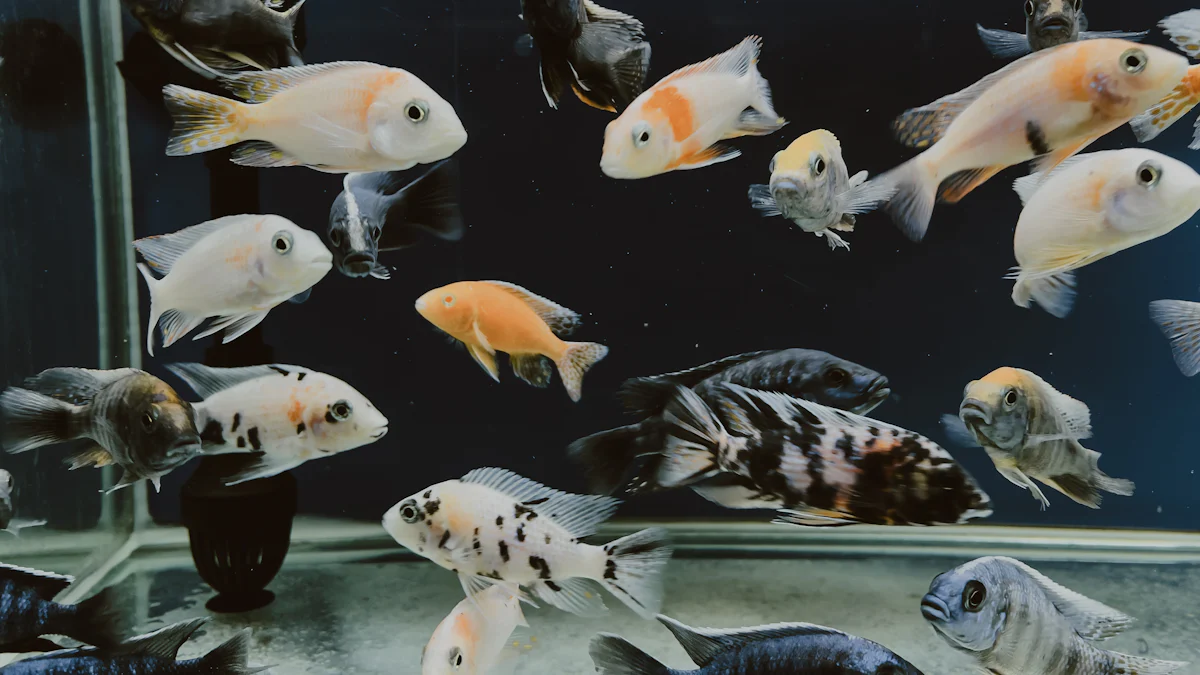
Mealworms for fish are a nutritious treat for aquarium inhabitants, offering high protein, fats, and essential nutrients. Most fish enjoy mealworms, especially insect-loving species like cichlids. These opportunistic eaters benefit from the enrichment that mealworms for fish provide. However, proper preparation, such as chopping or crushing, ensures safety and prevents choking hazards for smaller fish.
Key Takeaways
- Mealworms are healthy snacks for fish. They give protein and nutrients for growth and health.
- Cut or crush mealworms before feeding small fish. This stops choking and helps them digest better.
- Give mealworms only once or twice a week. Too many can make fish overweight. A balanced diet is important.
Nutritional Benefits of Mealworms for Fish

Protein content and its role in fish growth
Protein plays a vital role in fish growth, and mealworms are an excellent source of it. On a dry weight basis, mealworms contain between 47% and 60% protein. This high protein content supports muscle development, tissue repair, and overall health in fish. Here’s a quick look at the protein content of mealworms:
| Protein Content | Source |
|---|---|
| 47% – 66% | Yellow Mealworms |
Carnivorous fish, like cichlids, benefit the most from this protein-rich food. It helps them grow faster and stay active. Adding mealworms for fish to their diet can also improve their energy levels and overall vitality.
Vitamins and minerals essential for fish health
Mealworms are packed with essential vitamins and minerals that keep fish healthy. They are rich in B vitamins, including B12 and B2, which help with energy metabolism. These nutrients ensure fish have the energy they need to swim and thrive. Additionally, mealworms provide minerals like:
- Zinc, which boosts the immune system.
- Iron, essential for oxygen transport in the blood.
- Calcium and magnesium, which strengthen bones and scales.
These nutrients make mealworms a well-rounded food option for aquarium fish.
Comparing mealworms to other fish food options
When compared to traditional fish food like pellets or flakes, mealworms stand out. They offer 50-60% protein, which is higher than many processed options. Mealworms also contain healthy fats that enhance fish energy and improve their skin and color. Unlike commercial pellets, which may include fillers, mealworms are a natural and unprocessed food source.
For carnivorous fish, mealworms are particularly beneficial. They are easy to digest and provide a balanced profile of nutrients. This makes them a great addition to a varied diet, improving fish health and even supporting reproductive success.
Risks of Feeding Mealworms to Fish
Overfeeding and its consequences
Feeding too many mealworms to aquarium fish can lead to several problems. Overfeeding often causes obesity, which can harm a fish’s health. Obese fish may become less active and more prone to diseases. Uneaten mealworms can also sink to the bottom of the tank, where they decay and pollute the water. This can lead to poor water quality, stressing the fish and making them vulnerable to infections.
Here’s a quick breakdown of the risks associated with overfeeding:
| Risk Type | Description |
|---|---|
| Obesity | Overfeeding can lead to obesity in fish, resulting in various health issues. |
| Choking Hazard | The hard exoskeleton of mealworms can pose a choking risk, especially for smaller fish. |
| Parasites/Pathogens | Live mealworms may introduce parasites or pathogens; sourcing from reputable suppliers is crucial. |
To avoid these issues, fish owners should feed mealworms in moderation and remove any leftovers promptly.
Choking hazards for smaller fish
Mealworms have a hard exoskeleton that can be difficult for smaller fish to eat. This tough outer shell may cause choking, especially for fish with smaller mouths or weaker feeding habits. To make mealworms safer, it’s a good idea to crush or chop them into smaller pieces before feeding. This not only reduces the risk of choking but also helps the fish digest the mealworms more easily.
Contamination risks in live mealworms
Live mealworms can sometimes carry parasites or harmful pathogens. If introduced into the tank, these contaminants can infect the fish and disrupt the tank’s ecosystem. To minimize this risk, always buy mealworms from reputable suppliers. Washing the mealworms before feeding can also help reduce contamination. For added safety, some fish owners prefer dried mealworms, which are less likely to carry harmful organisms.
Live vs. Dried Mealworms for Fish

Benefits and drawbacks of live mealworms
Live mealworms bring a lot of benefits to aquarium fish. They are a natural source of protein and fats, with approximately 50% protein and 30% fat, making them an excellent energy source. Fish also benefit from the essential fatty acids in mealworms, which support growth and overall health. Another advantage is the ability to “gut-load” live mealworms. By feeding them nutritious foods like fruits before offering them to fish, owners can boost their nutritional value even further.
However, live mealworms come with some challenges. Their hard exoskeleton can pose a choking hazard, especially for smaller fish. They may also carry parasites or pathogens, which could harm the tank’s ecosystem. To minimize risks, sourcing live mealworms from reputable suppliers is essential. Overfeeding live mealworms can also lead to obesity in fish, so moderation is key.
Pros and cons of dried mealworms
Dried mealworms are a convenient alternative to live ones. They are easy to store, handle, and feed, making them a great option for fish owners who prefer not to deal with live insects. Dried mealworms also eliminate the risk of introducing parasites or pathogens into the tank.
On the downside, dried mealworms lack the ability to be gut-loaded, which means they cannot provide the extra nutrients that live mealworms can. Some fish may also find dried mealworms less appealing due to their texture. Soaking them in water before feeding can help make them more palatable and easier to digest.
Choosing the right type for your fish species
When deciding between live and dried mealworms, consider the size and dietary needs of your fish. Smaller fish, like bettas, may require baby mealworms, while larger species can handle full-sized ones. Live mealworms are ideal for fish that need a nutrient boost, thanks to gut-loading. On the other hand, dried mealworms are better for owners seeking convenience and safety.
Ultimately, the choice depends on the fish species and the owner’s preferences. Both options can be a nutritious addition to a fish’s diet when used correctly.
Feeding Mealworms to Aquarium Fish
Preparing mealworms for feeding
Preparing mealworms properly ensures they are safe and nutritious for aquarium fish. Live mealworms should be rinsed thoroughly to remove any dirt or contaminants. For smaller fish, chopping or crushing the mealworms makes them easier to eat and digest. This step also reduces the risk of choking. Dried mealworms, on the other hand, can be soaked in water for a few minutes before feeding. This softens their texture, making them more appealing and digestible for fish. Always source mealworms from reputable suppliers to avoid introducing harmful parasites or pathogens into the tank.
Appropriate portion sizes and feeding frequency
Portion control is key when feeding mealworms to fish. Overfeeding can lead to obesity and water pollution from uneaten food. A good rule of thumb is to offer mealworms in small amounts that fish can consume within a few minutes. For smaller fish, use baby mealworms or crushed pieces. Larger fish, like cichlids, can handle whole mealworms. Feeding mealworms once or twice a week keeps the diet balanced and prevents over-reliance on this single food source. Remember, variety is essential for maintaining fish health.
Tips for introducing mealworms into a fish’s diet
Introducing mealworms for fish into their diet requires a gradual approach. Start by offering small portions to gauge their interest. Crush or chop the mealworms to make them easier to eat, especially for smaller species. Always feed in moderation to avoid health issues like obesity. Sourcing mealworms from trusted suppliers ensures they are free from parasites or pathogens. With patience, most fish will accept mealworms as a tasty and enriching addition to their diet.
Mealworms for fish are a nutritious and safe food choice when used properly. They provide essential nutrients like protein and fatty acids, which support growth and vibrant colors. To ensure safety, fish owners should follow these key tips:
- Feed mealworms in moderation to prevent obesity.
- Chop or crush them to avoid choking hazards.
- Source mealworms from trusted suppliers to reduce contamination risks.
Incorporating mealworms into a balanced diet offers long-term benefits. Here’s a quick look:
| Nutrient | Value | Benefit |
|---|---|---|
| Protein | 50-60% | Essential for growth and development |
| Essential Fatty Acids | Present | Promotes healthy skin and vibrant colors |
| Digestibility | High | Suitable for various fish species |
By following these practices, fish owners can enhance their pets’ health and enjoyment. Mealworms also enrich the diet of insect-loving species like cichlids, making them a valuable addition to any aquarium.
FAQ
Are mealworms a good food source for all aquarium fish?
Mealworms provide protein, fats, and nutrients. Most fish enjoy them, especially insect-loving species like cichlids. However, smaller fish may need crushed mealworms for easier consumption.
How often should mealworms be fed to aquarium fish?
Feed mealworms once or twice weekly. This prevents overfeeding and ensures fish get a balanced diet with other food types.
Can live mealworms harm fish?
Live mealworms may carry parasites or pathogens. Always rinse them and buy from trusted suppliers to keep fish safe.


